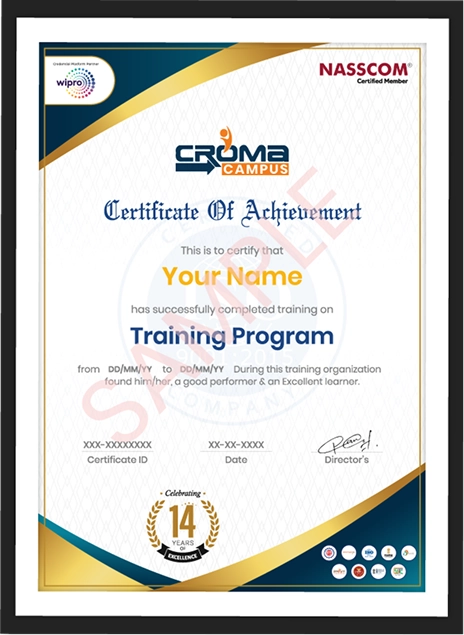Course Design By
Nasscom & Wipro
Become proficient in Java components and learn how to design and develop web applications from scratch using full-stack technologies.
Develop both single-page and multi-page applications based on your project requirements.
Harness the power of the MEAN stack to design advanced applications.
Explore a wide range of web development concepts, such as plugins, jQuery, AJAX, forms, events, Google APIs, and related topics.
Create documents with MongoDB and work on query reports effectively.
Acquire expertise in both front-end and back-end development.
Discover how to develop highly technical applications swiftly using JavaScript or TypeScript techniques.
This course for full-stack developers equips you to develop application components like services, controllers, and directives, enhancing your skills and versatility.
Embracing the technology of web development, which enables the management of both front-end and back-end processes, is a compelling motivation.
The ever-changing and evolving tech landscape facilitates exploring and adopting new methods and practices.
Recent research reports indicate that Java Full Stack Developers can potentially earn salaries of up to 16 lakhs per annum, underscoring the financial incentives.
By cultivating the right skills and competencies, we can position ourselves at the forefront of emerging trends and qualities.
Individualized guidance and a structured approach play a pivotal role in this transformative journey.
MongoDB, Node.js, Angular, CSS, HTML, React JS, Express, and more full-stack development technologies.
Understanding Java Components and designing single-page and multi-page web apps with full-stack technologies.
Building powerful apps to their full potential using full-stack development.
Web development concepts including JQUERY, events, forms, Google APIs, plug-ins, and more.
Proficiency with MongoDB for document creation and effective query reporting.
Web series consumption and deep insights into front-end and back-end development.
Developing highly technical apps efficiently with TypeScript or JavaScript techniques.
Crafting application parts like controllers, services, and directives.
we train you to get hired.

By registering here, I agree to Croma Campus Terms & Conditions and Privacy Policy
+ More Lessons
Course Design By

Nasscom & Wipro
Course Offered By

Croma Campus

Stories
success
inspiration


career upgrad


career upgrad


career upgrad


career upgrad
12-Jul-2025*
14-Jul-2025*
09-Jul-2025*
12-Jul-2025*
14-Jul-2025*
09-Jul-2025*

You will get certificate after
completion of program

You will get certificate after
completion of program

You will get certificate after
completion of program
in Collaboration with






Empowering Learning Through Real Experiences and Innovation

we train you to get hired.

Phone (For Voice Call):
+91-971 152 6942WhatsApp (For Call & Chat):
+91-971 152 6942Get a peek through the entire curriculum designed that ensures Placement Guidance
Course Design By


Course Offered By

Ready to streamline Your Process? Submit Your batch request today!
Proudly, we can say we have given training to more than 500+ professionals till today.
Yes, you may request the demo class before enrolling for the Full Stack Developer course.
Well, it does not matter where you live, you may opt for online or offline classes both at your convenience.
Full Stack development is a vast field and it may take more than 03 months to complete this course.
Croma Campus is a reputable and renowned Full Stack Developer Training Institute in Hyderabad. With a strong brand reputation, it offers numerous advantages, including flexible class schedules, job placement assistance, expert instructors, and a comprehensive curriculum. While obtaining a certification can boost your chances of receiving interview invitations from top companies in India and overseas, your true expertise and commitment to mastering the subject matter will ultimately set you apart.

FOR QUERIES, FEEDBACK OR ASSISTANCE
Best of support with us
For Voice Call
+91-971 152 6942For Whatsapp Call & Chat
+91-9711526942